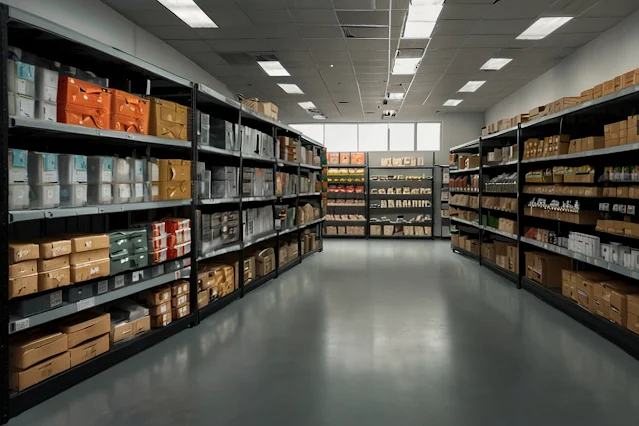In today's rapidly evolving retail landscape, businesses face the constant challenge of efficiently managing their operations while staying competitive. One solution that has emerged to tackle this challenge is merchandising software. In this article, we'll delve into what merchandising software is, its key features, benefits, considerations for choosing the right software, implementation strategies, successful case studies, future trends, and more.
I. Introduction to Merchandising Software
A. What is Merchandising Software?
Merchandising software is a comprehensive solution designed to assist retailers in managing various aspects of their merchandising operations. It encompasses functionalities such as inventory management, sales tracking, data analysis, and more, all aimed at optimizing the retail experience for both businesses and customers.
B. Importance of Merchandising Software
In today's competitive retail landscape, efficient merchandising is crucial for success. Merchandising software streamlines processes, enhances decision-making capabilities, and improves overall operational efficiency, enabling businesses to stay ahead in the market.
II. Key Features of Merchandising Software
A. Inventory Management
Effective inventory management is essential for retailers to ensure optimal stock levels, minimize stockouts, and avoid overstocking. Merchandising software provides real-time insights into inventory levels, streamlining replenishment processes and reducing the risk of inventory-related losses.
B. Sales Tracking
Merchandising software enables retailers to track sales performance across various channels and locations. By analyzing sales data, businesses can identify trends, forecast demand, and make informed decisions to maximize sales opportunities.
C. Data Analysis
Data analysis is a cornerstone of effective merchandising. Merchandising software collects and analyzes data from various sources, including sales transactions, customer interactions, and market trends, providing valuable insights that drive strategic decision-making.
III. Benefits of Using Merchandising Software
A. Increased Efficiency
By automating manual tasks and streamlining processes, merchandising software improves operational efficiency, allowing retailers to allocate resources more effectively and focus on core business activities.
B. Improved Decision Making
With access to real-time data and analytics, retailers can make data-driven decisions that are aligned with their business objectives. Merchandising software empowers businesses to identify opportunities, mitigate risks, and optimize merchandising strategies for better results.
C. Enhanced Customer Experience
A seamless and personalized shopping experience is essential for customer satisfaction and loyalty. Merchandising software enables retailers to better understand their customers' preferences and behaviors, allowing them to tailor their offerings and deliver exceptional shopping experiences.
IV. Choosing the Right Merchandising Software
A. Scalability
When selecting merchandising software, scalability is a crucial factor to consider. Businesses should choose a solution that can grow with their needs and adapt to changes in their operations and industry landscape.
B. Integration Capabilities
Merchandising software should seamlessly integrate with existing systems and platforms, such as POS systems, ERP software, and e-commerce platforms. Integration capabilities ensure smooth data flow across the organization and enable a holistic view of operations.
C. User-Friendly Interface
User adoption is key to the success of any software implementation. Merchandising software should have an intuitive and user-friendly interface, allowing users to easily navigate and leverage its functionalities without extensive training.
V. Implementing Merchandising Software
A. Training and Support
Proper training and ongoing support are essential for successful software implementation. Businesses should provide comprehensive training to users and ensure access to timely support resources to address any issues that may arise.
B. Customization
Every business is unique, and merchandising software should be customizable to meet specific needs and requirements. Customization options allow businesses to tailor the software to their workflows and preferences, maximizing its effectiveness.
C. Testing and Optimization
Before fully deploying merchandising software, businesses should conduct thorough testing to identify and address any potential issues or discrepancies. Continuous optimization ensures that the software remains aligned with evolving business needs and delivers maximum value.
VI. Case Studies: Successful Implementation Stories
Real-world examples of successful merchandising software implementations showcase the tangible benefits and ROI that businesses can achieve. Case studies provide insights into best practices, challenges faced, and lessons learned, helping businesses make informed decisions.
VII. Future Trends in Merchandising Software
A. Artificial Intelligence
Artificial intelligence (AI) is poised to revolutionize the retail industry, offering advanced capabilities such as predictive analytics, personalized recommendations, and automated merchandising. Future merchandising software is expected to leverage AI to deliver more intelligent and proactive solutions.
B. Mobile Applications
With the proliferation of mobile devices, mobile applications are becoming increasingly important in the retail space. Future merchandising software is likely to prioritize mobile compatibility, enabling retailers to manage their operations on the go and provide seamless omnichannel experiences.
VIII. Conclusion
Merchandising software is a powerful tool for retailers looking to streamline their operations, enhance decision-making capabilities, and deliver exceptional customer experiences. By leveraging the key features, benefits, and best practices outlined in this article, businesses can effectively harness the power of merchandising software to stay ahead in today's competitive market.
FAQs
1. Is merchandising software suitable for small businesses?
Yes, merchandising software solutions come in various sizes and can be tailored to meet the needs of small businesses.
2. How long does it take to implement merchandising software?
The implementation timeline can vary depending on factors such as the complexity of the software, customization requirements, and the size of the business. On average, it may take several weeks to several months.
3. Can merchandising software integrate with other business systems?
Yes, most merchandising software solutions offer integration capabilities to seamlessly connect with other business systems such as POS, ERP, and e-commerce platforms.
4. What kind of support is available for users of merchandising software?
Merchandising software providers typically offer various support options, including training, documentation, online resources, and customer support channels such as phone and email.
5. How often should merchandising software be updated?
It's essential to keep merchandising software up-to-date to ensure optimal performance and security. Updates are typically released periodically by the software provider, and businesses should schedule regular updates accordingly.









0 Comments
In case you have questions or queries related to this post/article please comments down below will get back to as soon as possible.